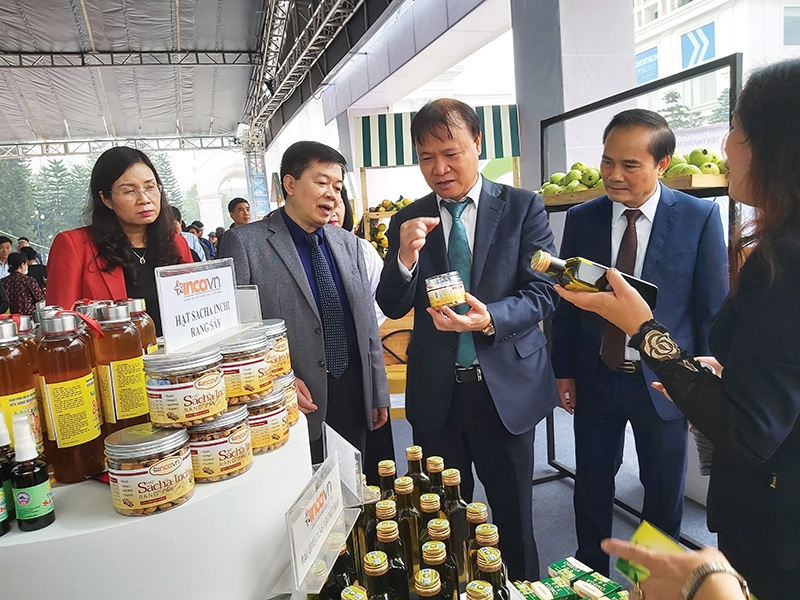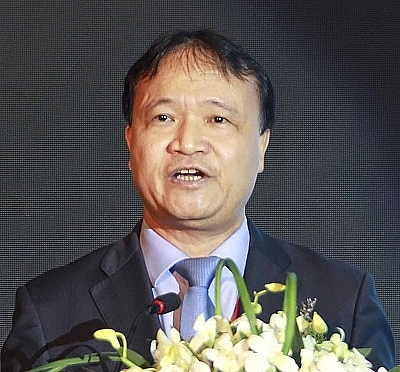Trade promotion events countering pandemic effects
 |
| Vietnam has many local specialities that groups are looking to export further afield |
As the pandemic has been causing businesses to adjust their strategies throughout the year to constantly adapt to the new situation, the Ministry of Industry and Trade has taking important steps to promote trade and reinvigorate business.
As such, the ministry launched the National Trade Promotion Programme and directed the Vietnam Trade Promotion Agency (Vietrade) to act as a mediator between the departments of industry and trade of the provinces Ha Giang, Hoa Binh, Phu Tho, Tuyen Quang, and Yen Bai.
Le Thi Van, general director of Inca JSC from Hoa Binh said, “This morning, we received feedback from US customers who purchased some of our beauty and personal care products as the result of Vietrade’s promotional activities in the US, Japan, and Thailand.”
The message came after eight months of researching and testing Inca’s products which now can be widely sold in not only the domestic but also foreign markets.
This success story is one among many that were possible because of the restructuring projects that the five mountainous provinces have implementing in accordance with policies focusing on high-quality products.
However, despite these efforts, the output of products remains an issue. For instance, the output of Phu Tho-based Hoa Trung Tea Co., Ltd. increased sharply after nearly 20 years of development. The company runs three closed production lines with a capacity of over 40 tonnes of fresh tea buds, which are normally sold in markets like Taiwan and the Middle East but have now been impeded by the lasting pandemic.
Meanwhile, producers of seven products from Ha Giang province that have been recognised as local specialities – including non-glutinous rice, seedless persimmon, and mint honey – also met many difficulties in exporting their goods. To promote such local specialities for export, Ha Giang is now focusing on redirecting the production and marketing of a number of these products.
Even though some of these agricultural products gradually created stable markets through domestic trade promotion, with some of them even exported to markets like South Korea, Japan, and the EU, the overall expansion remains tricky as the pandemic continues to hinder the plans.
Ha Giang’s current scheme for sustainable agricultural development includes a plantation area for raw timber of over 180,000 hectares, of which 39,000ha are reserved for large wood types and 27,700ha for FSC-certified timber.
Meanwhile, in an effort to increase one of Tuyen Quang’s local specialities, the Ham Yen orange, the province currently reserves an area of 8,600ha for plantations with an estimated output of over 100,000 tonnes. Last month, the Ministry of Science and Technology recognised Ham Yen orange as a local speciality with significant value for the region’s agriculture, and the fruit was voted one of the 50 most delicious fruits in Vietnam.
Similar to the aforementioned provinces, Yen Bai’s enterprises have also been suffering under the pandemic as consumption of their products fell sharply, both in domestic and overseas markets.
To counter this development, Yen Bai is currently creating more favourable conditions based on national and regional laws and regulations to invite foreign enterprises for joint ventures and investment in domestic production and export activities.
Therefore, in addition to developing local agricultural and forestry products, the province also promotes cooperation and expansion of industrial goods to make best use of all of its resources. For example, the province boasts 257 mines for metals and materials like calcium carbonate which is used as a building material and an ingredient for cement and floor tiles.
| Do Thang Hai - Deputy Minister of Industry and Trade
Since the beginning of the year, the Ministry of Industry and Trade and the supporting domestic trade promotion agencies, have organised many online trade conferences with foreign trade partners that created thousands of connections between Vietnamese businesses and overseas importers in existing and potential export markets. These linking activities are and will contribute to solving a part of the difficulties for domestic business, and contribute to promoting export growth and economic stability, while helping to restructure sectors and industries towards sustainability in the context of the lasting pandemic. |
Deputy Minister of Industry and Trade Do Thang Hai said, to bring the domestic export industry back to life, local trade promotion agencies have made use of the Vietnamese trade system around the world to organise several online trade promotion conferences and establish further connections between domestic businesses and overseas importers in key markets.
“Once established, these trade links will contribute to solving a part of the difficulties for domestic business and boost export growth and economic stability,” the deputy minister explained.
According to Hai, Vietnamese businesses are currently actively increasing their efforts to promote trade relations and exploit local capacities, while ensuring not to disrupt the established supply chains.
“Nonetheless, these businesses will also need the support of government agencies and localities to bring their goods to foreign buyers like distributors and large supermarket chains,” Hai emphasised.
Despite the obstacles that the pandemic placed in the way of international trade, trade connections between cities, provinces, and markets are increasing in numbers again.
Chinese Trade Counsellor to Vietnam Ho Ta Cam said, “Trade promotion activities with China have been accelerated significantly in recent years thanks to a close and effective cooperation.”
Even amid the health crisis, “We cooperated with Vietrade to organise six different events with the participation of over 1,000 enterprises from both countries,” the counsellor added.
As a result, the connections between suppliers, exporters, and trade promotion organisations are increasing in both quantity and quality, and both countries plan to further their efforts in promoting bilateral trade.
Meanwhile, Indonesia with its over 250 million consumers is becoming one of Vietnam’s key markets in the region. Since 2010, Indonesia has begun to turn towards its new partner as a major supplier for several kinds of goods after Thailand stopped implementing its government-level agreement with the archipelago.
Data from the Agro Processing and Market Development Department showed that Indonesia’s value as an export market has seen a sharp increase in the first 10 months of 2020, reaching nearly 77,000 tonnes of goods worth nearly $42 million coming from Vietnam.
However, most of Vietnam’s primary export products like agricultural products, textiles, and home appliances have not yet increased strongly in this market.
Masriati Lita Saadia Pratama, the Indonesian Embassy in Hanoi’s economic coordinator said, “Vietnam has many products with potential for export to the Indonesian market, especially dry agricultural products.”
According to Masriati, one of the most effective ways to increase bilateral trade is through trade promotion activities between both countries.
“With the support of both countries’ governments, businesses will see many opportunities to access new importers, partners, and distributors in Indonesia. At the same time, through these activities, images and brands of Vietnamese products will be introduced and effectively promoted to Indonesian partners,” Pratama emphasised.
What the stars mean:
★ Poor ★ ★ Promising ★★★ Good ★★★★ Very good ★★★★★ Exceptional
Related Contents
Latest News
More News
- Hanoi farms over 100 pomelo producing areas (December 05, 2024 | 18:05)
- Vietnam ranks among top three global shrimp exporters (August 07, 2024 | 16:13)
- Unlocking the potential of Vietnamese medicinal herbs (October 05, 2023 | 11:29)
- Hanoi promotes trade, investment, tourism cooperation with central provinces (July 10, 2023 | 09:57)
- VICO Fresh coconut creates buzz at trade show (May 26, 2023 | 20:20)
- Vietnam strengthens green branding (April 20, 2023 | 17:18)
- Increasing trade connectivity between Hanoi and localities (November 24, 2022 | 18:00)
- Vietnam recognises 325 products as national brands (October 26, 2022 | 17:13)
- Brand Finance Forum 2022: Honouring Vietnam’s 50 most valuable brands in 2022 (September 22, 2022 | 09:32)
- Ample opportunities for Vietnamese businesses in trade (May 20, 2022 | 07:00)


 Tag:
Tag:





















 Mobile Version
Mobile Version